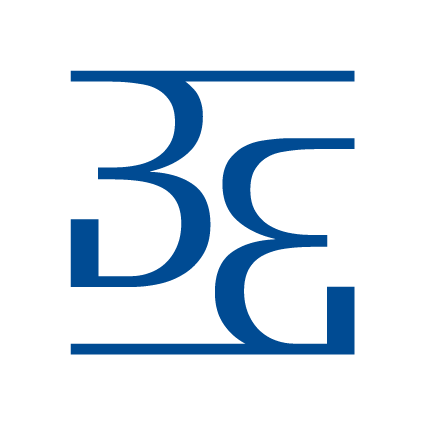
Corporate Governance Principles
The Board of Directors and the Executive Management manage the company in accordance with all laws and regulations applicable in the European Union, as well as the statutory and regulatory requirements of the Grand Duchy of Luxembourg and the Articles of Association of Baumann & Partners, with the aim of sustainable value creation and in the interest of the company.
In doing so, they take into account the interests of shareholders, employees, and other groups associated with the company (stakeholders).
Board of Directors and Executive Management
Board of Directors
The Board of Directors carries overall responsibility for the company. It is responsible for establishing, overseeing, and maintaining sound overall governance, corporate management, and internal controls. This includes a clearly structured internal organization and independent internal control functions. The established framework must ensure the company's sound and prudent management, guarantee its continuity, and preserve its reputation.
Thus, the Board of Directors is responsible, among other things, for the following areas:
- the business strategy
- the risk strategy
- procedures for risk monitoring and identification
- the strategy regarding required internal capital and liquidity reserves
- a clear and coherent organizational and operational structure
- establishment of frameworks concerning information systems, technology, and security
- adequate internal control mechanisms
- a remuneration policy and practices that are consistent with and conducive to sound and effective risk management
- procedures for risk monitoring and identification
- a set of rules to maintain business operations in case of disruptions
The Board of Directors consists of three members. Each has at least 20 years of investment experience and extensive leadership experience.
Executive Management
The authorized Executive Management is responsible for the day-to-day operations, adhering to the strategic directions and policies approved by the Board of Directors. In particular, it safeguards and considers the company's long-term financial interests, its solvency, and liquidity position.
The Executive Management consists of two individuals who are permanently on-site. Both executives hold degrees in economics, have at least 20 years of investment experience in various sectors, and possess extensive leadership experience. One executive has also completed additional training to become a certified compliance officer. Additionally, one of the executives is also a member of the Board of Directors. This ensures that all significant matters are promptly communicated to the entire Board of Directors.
Risk Management Objectives and Policy
Risk management is a fundamental element of the company's business practice at all levels and encompasses various types of risks. At the management level, risk management is an integral part of business planning and control processes. Key risks are monitored and regularly discussed with the management and the individual responsible for risk management.
In accordance with Luxembourg laws and EU regulations, the company conducts an annual risk assessment. The company's risk management system covers both financial and operational risks. The term "risk" is understood as the possibility of a negative event occurring that adversely affects the achievement of the company's objectives. In this context, both the probability of occurrence and the potential impact of the risk on the company are evaluated.
Risk Management as an Integral Part of the Internal Control System
Risk management is a component of the Internal Control System (ICS), which follows the classical Three-Lines-of-Defense model to systematize risk approaches. The first line of defense is operational management, which follows established processes to identify and assess risks. The second line of defense includes risk management alongside compliance, accounting, and IT, to monitor and support operational activities. Within the ICS, internal auditing represents the third line of defense, which must be independent. Due to its size, Baumann & Partners has decided to outsource the auditing to an external audit firm.
In the context of the risk management system, preventive and mitigating measures for risk control are implemented at different levels and are integral to management responsibility. Operational risks are addressed according to established competencies where they occur.
The evaluation and assessment of financial risks are carried out by accounting and asset management. Operational risks are identified through workflow descriptions of individual departments. Strategic risks are addressed at the management level, and management informs the Board of Directors about risk management. All identified risks are recorded and evaluated in the company's risk table, which is presented to the Board of Directors after each update.
The risks include:
- Financial risks such as interest rate, credit, liquidity, and currency risks, which are continuously monitored and managed by accounting and asset management.
- Risks arising from asset management and distribution are minimized through standardized forms, monitoring by internal systems and compliance, and the company holds insurance to cover potential damages.
- The growing challenges of global and economic developments and financial market uncertainties are of central importance to risk policy, mitigated by adequate risk diversification and avoidance of concentration risks.
- In addition to operational readiness, the availability of the IT network is crucial, with continuous system monitoring and backup structures as risk mitigation measures.
- Organized crime, terrorism threats, increased regulatory density, growing complexity, and customer expectations have raised demands and risks concerning security, addressed through a holistic view of supply chains under security aspects.
- Risks from anti-money laundering (AML) and terrorism financing are countered with due diligence and Know Your Customer processes, checks against blacklists and sanctions lists, training, and regular AML controls like transaction monitoring.
- Legal and compliance risks, including fraud risks and risks of intentional or unintentional legal violations, are addressed with various measures, such as employee training, regular compliance checks, and the establishment of defined work processes for employees to follow.
- Communication risks affecting capital market relevance and image and reputation risks, especially related to compliance, are addressed through a documentation requirement that ensures traceability of processes.
To ensure effectiveness in this area, continuous dialogue between management, risk management, and the Board of Directors is maintained. The company's risk table undergoes regular review and critical questioning to ensure constant development of the risk management system. Management plans the company's risks prudently against the backdrop of long-term success planning.
Management assesses the overall risk as very low due to the business model, which involves asset management and investment advice for institutional clients, along with established procedures and controls.
As of December 31, 2022, equity amounts to EUR 1,229,877.86 thousand. The equity ratio stands at 32.4%.



